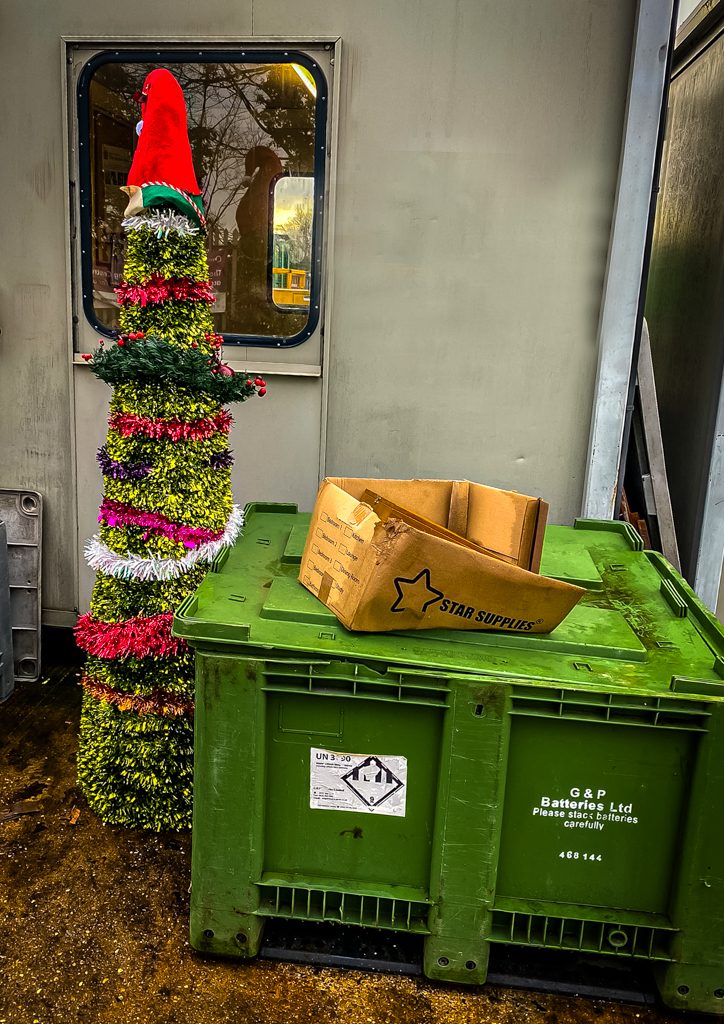
The lads at the local council tip have done their best to create a festive atmosphere.
Seasons Greetings to all my reader.
Cheers
John
John Gough Photography
by John Gough
by John Gough
There is an exhibition at the Martin Parr Foundation of work by Tony Ray-Jones.
The exhibition is on until December 21st 2019.
Ray-Jones was a pioneer and an inspiration to Parr.
“Tony Ray-Jones was one of my initial inspirations. His imagery showed me what was possible photographing my own country.” – Martin Parr
He is famous for photographing the eccentricities of English life. After studying in the US, he returned to England. Between 1966-68, Ray-Jones travelled around England in a VW camper van, capturing the customs and peculiarities of the British people, on the street, on holidays in seaside towns, and at social events. The ubiquitous class system so prevalent in 60’s Britain was a constant theme.
As he explained to Creative Camera in 1968:
I have tried to show the sadness and the humour in a gentle madness that prevails in a people. The situations are sometimes ambiguous and unreal, and the juxtaposition of elements seemingly unrelated, and the people are real. This, I hope helps to create a feeling of fantasy. Photography can be a mirror and reflect life as it is, but I also think that perhaps it is possible to walk, like Alice, through a Looking-Glass, and find another kind of world with the camera.
During his time in the States at the Yale School of Art, he knew and was influenced by young American documentary photographers like Gary Winogrand and Joel Meyerowitz.
Returning home in 1965 he was full of ideas with notebooks full of lists and what to do next.
“Get more involved (talk to people),” began one typical list of these notes to self. “Stay with the subject matter (be patient). See if everything in the background relates to the subject matter. NO MIDDLE DISTANCE.”
There followed six years of photography that defined him, where he searched for the essence of Englishness. As the Guardian shows here it was an England that was not so swinging. The Ray-Jones version was how the 60’s really looked
In 1971 he was back in the States with his wife Anna working at a teaching position at the San Francisco Art Institute. He was diagnosed with leukaemia in 1972. He returned to England to be treated at the Royal Marsden Hospital but died aged 31.
I have curated some of his work here
I have avoided dropping my camera so many times using a simple inexpensive wrist strap like this one. Cameras and expensive lenses do not bounce!
UK
USA
by John Gough
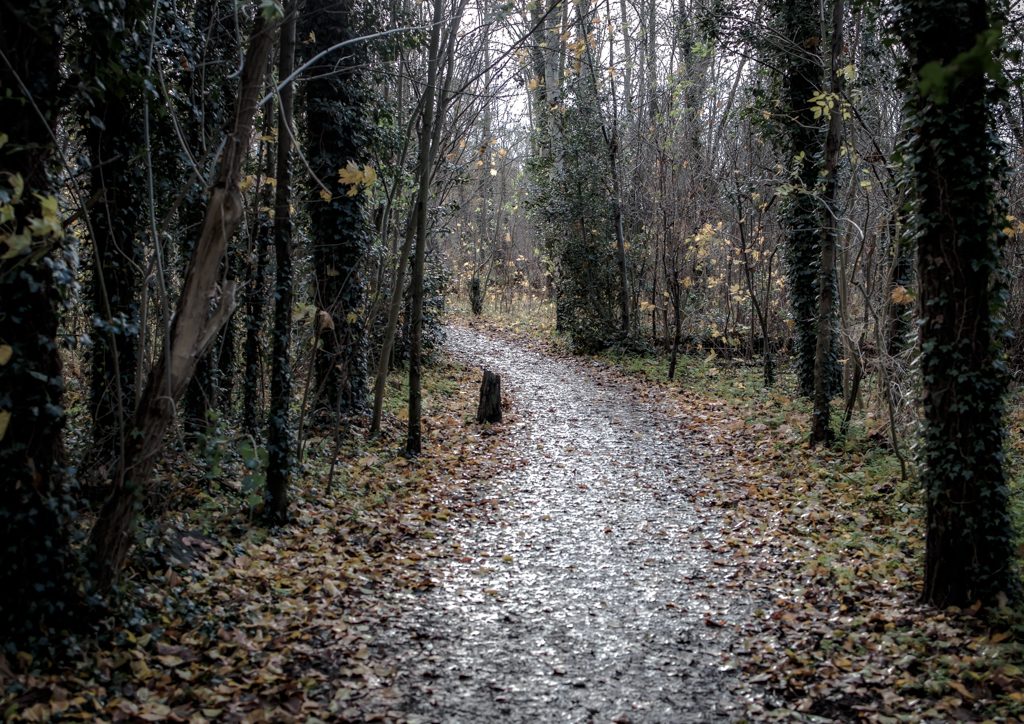
When I walk I see pictures, I am not mad I am a photographer. My mind is filled with images. Look at the colour of those leaves against that dark tree trunk. Look at that old man sitting on a bench. The clouds are amazing!
We are photographers, and as we take more and more pictures we develop that sense of seeing. The camera is just an extension of ourselves capturing that moment.
Photographers live in the moment. Cartier Bresson called it the decisive moment. Capturing as he put it, ‘in a fraction of a second’, ‘the significance of an event as well as of a precise organisation of forms which give that event its proper expression’. As photographers, we are always looking, forever seeing.
It is all too easy to rush through life without stopping to notice very much. Preoccupied with our thoughts, concerns and anxieties. Professor Mark Williams, former director of the Oxford Mindfulness Centre, describes this as ‘“trapped” in reliving past problems or “pre-living” future worries’. He believes that living the moment, aware of the world around you and your own thoughts and feelings can improve our wellbeing.
Recently I saw an inspiring presentation by Paul Sanders a photographer with a mindful approach to photography. His website is Still which describes his philosophy.
‘I believe that photography has the power to influence our perception of the world around us, building a sense of appreciation and contentment simply by taking the time to notice what’s around us and how that makes us feel. Through photography, we can discover a better way to understand ourselves, our thoughts and our feelings, and to reconnect with a world we normally rush through’.
There was a lot to take away from his talk, but what impressed me was the notion that you don’t have to pick up your camera and go out to take a particular picture. e.g. “Today I will take street photographs in Soho”.
Instead, pick up the camera and see where it takes you. Following an evening listening to Paul. I started to venture out and photograph what I saw, and what expressed how I felt in that moment.
The results are not fantastic photographs, (see above) but it made me realise that seeing and living the moment, is one of photography’s greatest gifts.
I have avoided dropping my camera so many times using a simple inexpensive wrist strap like this one. Cameras and expensive lenses do not bounce!
UK
USA
by John Gough
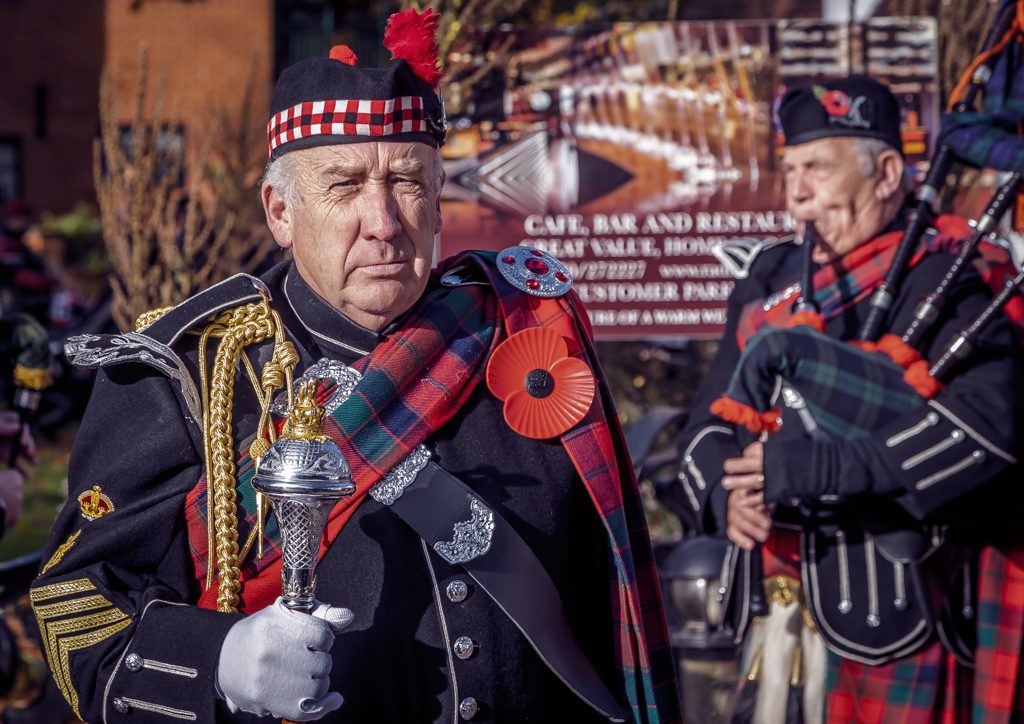
Earlier this month at the Remembrance Day Service on Bedford’s Embankment, it was a privilege to watch the Bedford Pipe Band.
They were magnificent to look at in their colourful Scottish Highland regalia, and the sound of their pipes and drums was both haunting and uplifting.
These are some pictures I managed to grab on the day
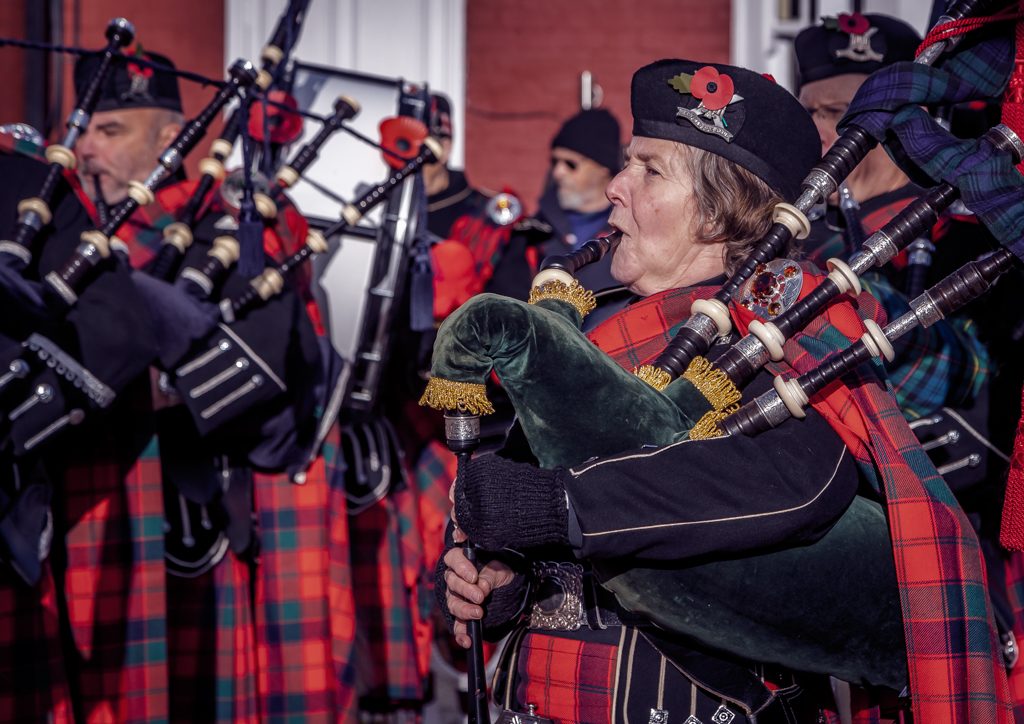


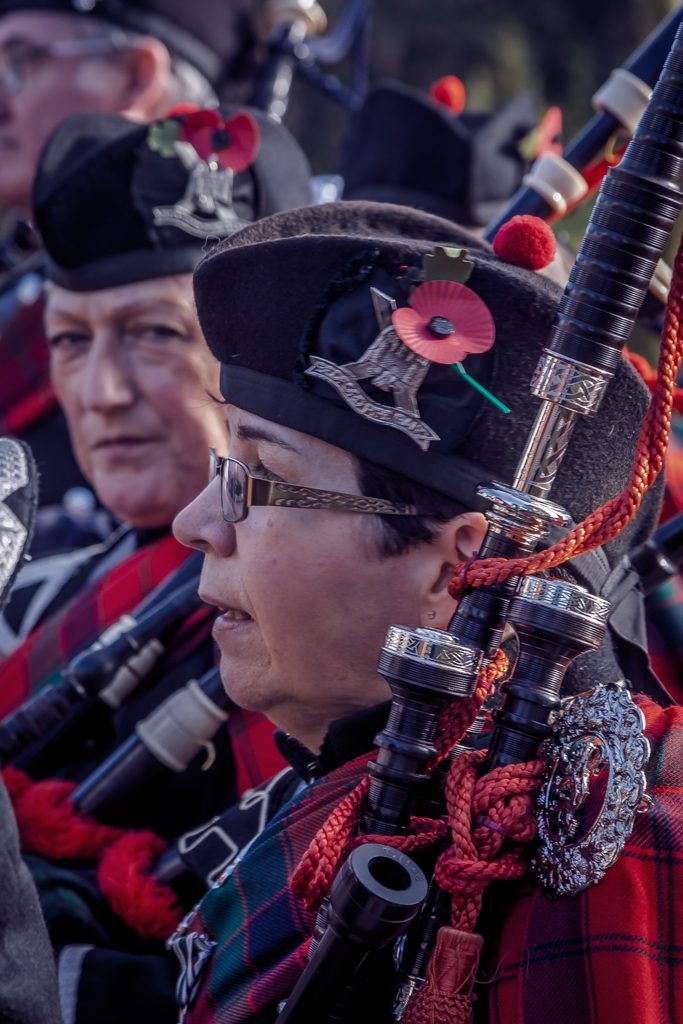
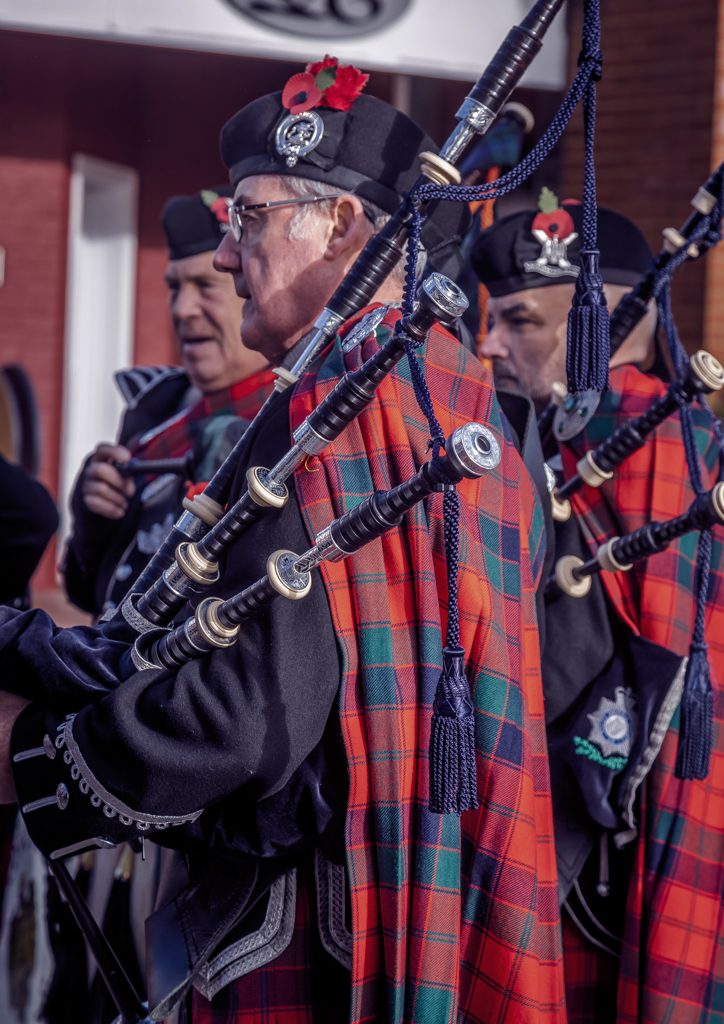
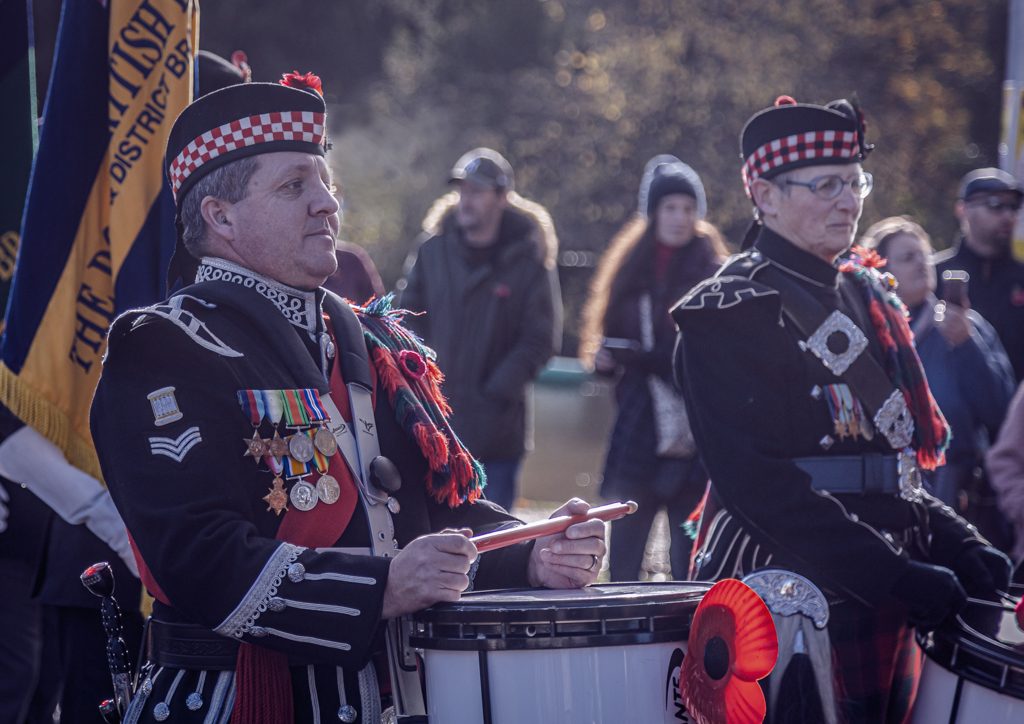

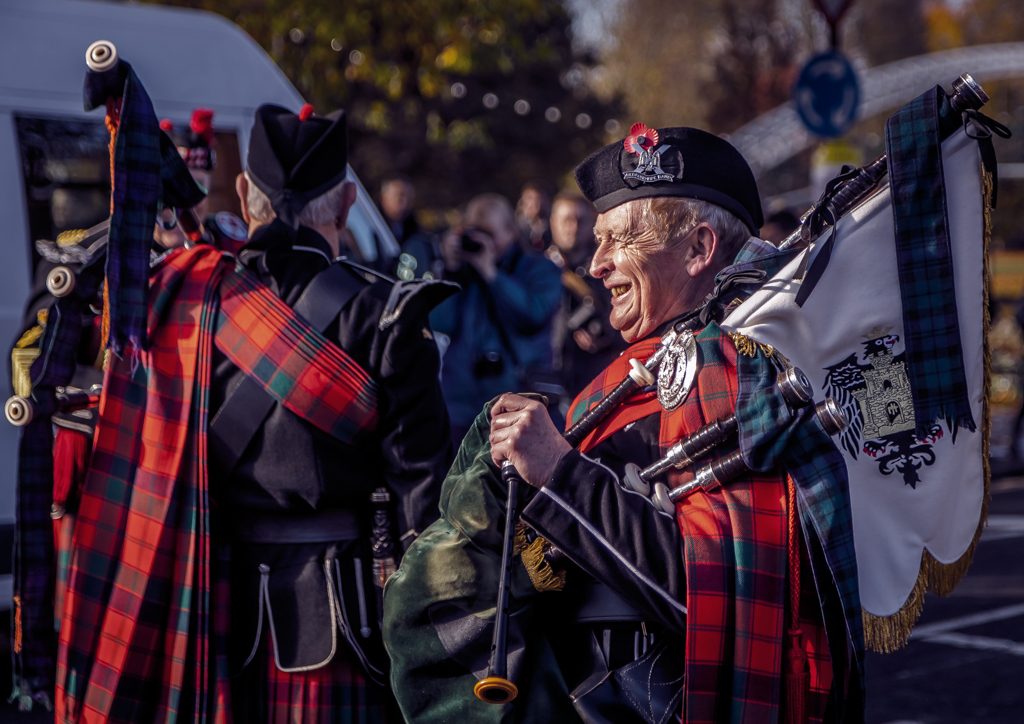
by John Gough
Terry O’Neill has died aged 81. A spokeswoman for Iconic Images said: “It is with a heavy heart that Iconic Images announces the passing of Terence ‘Terry’ O’Neill, CBE.
“Terry was a class act, quick-witted and filled with charm. Anyone who was lucky enough to know or work with him can attest to his generosity and modesty.
“As one of the most iconic photographers of the last 60 years, his legendary pictures will forever remain imprinted in our memories as well as in our hearts and minds.”
In the clip above he looks back on his life and remarks that he can’t believe it all happened. Of course, we are all photographers now, but back then we weren’t.
In the next much longer video, Terry O’Neill looks back on his life in photography.
He was around at a unique time when access to celebrity was still possible. The world was also undergoing a cultural revolution led by younger people like the Beatles, the Rolling Stones, Twiggy, Micheal Caine and Elton John. Terry O’Neill photographed them all.
What Terry O’Neill had was a camera usually a Leica and the eye for a good photograph. His pictures of public figures and stars have become iconic. As we and the stars have aged, the photographs have retained all the crispness and relevance they had the day they were taken.
This is the Terry O’Neill Instagram account.
I have collated some of his work here
by John Gough
by John Gough
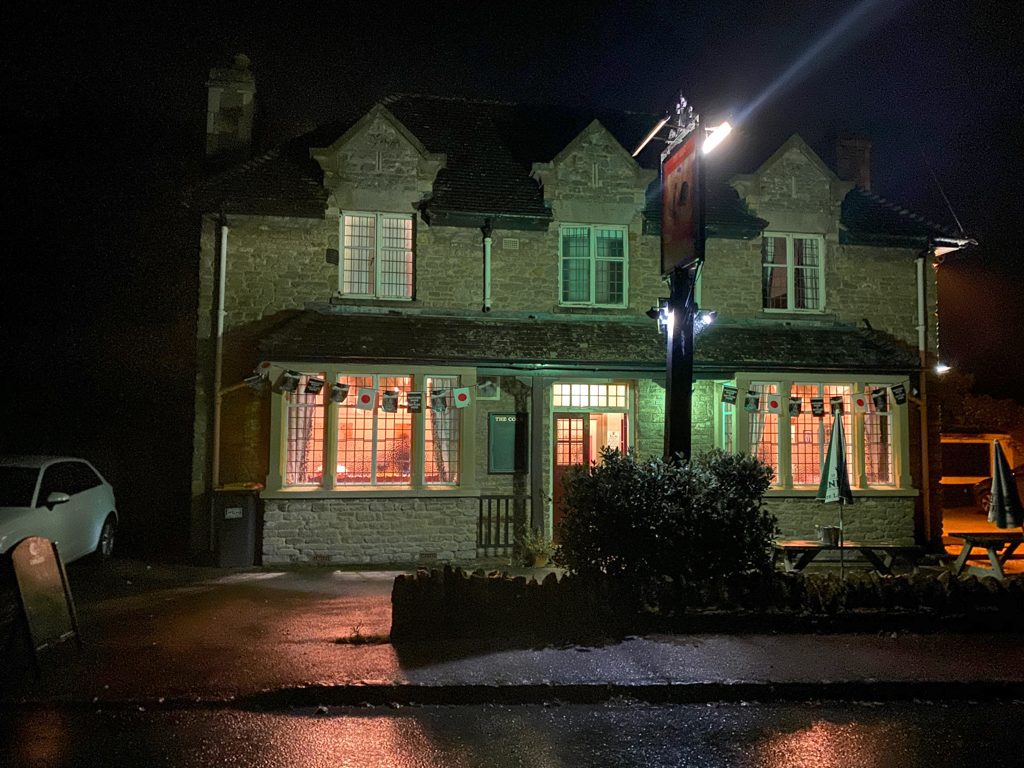
Canon unit sales are down this quarter by a massive 22%. It seems cameras are going the same way as alarm clocks, pagers, calculators and road maps. Superceeded by the ubiquity and technology of the smartphone.
Nobody carries a pocket camera with them anymore. The ease of having a smartphone camera in your pocket has become too compelling and convenient. As a result compact camera sales were down 88% in the year to August 2019 across the market.
Compact cameras have all but disappeared, but all camera types are in decline. Canon interchangeable lens cameras are down 19%, as the market for entry level DSLR’s dries up. As smartphones get smarter, DSLR cameras and even mirrorless cameras are heading for the floor
It is not just the technology, but also the quality of smartphone photography that continues to improve. As this review of smartphones by a professional photographer illustrates.
When Apple launched the iPhone in 2007, the small 2MP camera would not have been seen as much of a threat to Canon’s position in the camera market. Whilst the traditional camera makers concentrated on bigger sensors and more lenses, the smartphone makers took a different route. They chose the only road they knew, which was software. The direction of this development was computational photography.
As Phil Schiller of Apple boasted that the iPhone 11‘s new computational photography abilities are “mad science.” While Sabrina Ellis from the Google Pixel team said when they introduced the new Pixel 4. “The special sauce that makes our Pixel camera unique is our computational photography.”
The photograph at the top is of my local pub at night, taken with an iPhone using night mode. Part of the iPhone’s computational photography capability. It is amazing, I would need a tripod and a long exposure to do the same with my Canon EOS R.
I am grateful to my friend Jim Boud who found this brilliant feature which explains all you need to know about the science.
As you read through this immense article you begin to realise just what a dinosaur your expensive DSLR is becoming. Computational photography is taking us to a completely new vista. Cameras that start taking photographs before you even hit the shutter. Combine tens of images to find the perfect exposure. Eliminate motion blur by combining images and even produce artificial bokeh.
Is there a future for the traditional camera? Perhaps amongst professionals and enthusiasts. Then again Apple could combine all this technology with a full frame sensor and reinvent the camera. Disrupting the market, just as they did with the iPod, iPhone, and iPad. Watch out for the relaunch of the iPhoto.
One thing is for certain if the photograph of my local pub is anything to go by, a shot in the dark will never be the same again.
by John Gough
Photoshop will soon have a new cut out tool which Adobe is calling the Object Selection Tool.
YouTube videos on the subject of cutting out objects from their backgrounds will try to persuade you that the marquee or lasso tools make selecting things easy. Perhaps it does with the simplest of subjects, but generally, I resort to a painstaking multi-click marathon with the pen tool.
Adobe is using AI to make the process easier as the video from Adobe above demonstrates. Drag the rectangular marquee or lasso over the subject to be selected and Sensei the Adobe AI engine can distinguish the subject from its background.
By just selecting the general area of the things you’d like to include or exclude, Sensei identifies the correct subject and snips a precise selection around it.
“It’s like it reads your mind and shrink-wraps the object with the selection,” says Adobe’s Meredith Stotzner in the video.
Adobe will not be drawn, (no pun intended) but anytime soon seems to be the answer.
by John Gough

This is the second instalment (the first instalment is here) of the Canon RF 24-240mm lens review of reviews. There are are a couple of new reviews in.
In fairness, the new reviews are not very different from previous reviews but they do confirm the general direction of travel. It does not change my conclusion.
To recap on the spec’…..
How good is it though? It is not an L lens, so it is not the best quality lens that Canon can manufacture. However, Canon claims that the lens is RF quality because the new mount and flange distance provide Canon with new optical opportunities.
Only now are reviewers getting hold of the lens and putting it through some tough testing.
This is a report based on using the lens on a shoot for ten days in China.
This review gave the lens 4 stars.
This review gave this lens 5 stars.
Christopher is an urbane English guy. This is his review:
This review from PetPixel by Martin Bissig a Canon Ambassador who took the lens on a trip through the rugged terrain of Pakistan.
There was a time when professional photographers would not use telephoto lenses. They just used prime lenses. However as quality improved, there is now not a professional photographer who has not got one in their bag.
There is currently a similar disenchantment with superzooms. But what press photographer would not want to use a superzoom rather than have multiple cameras hanging around their necks.
Times change. A smartphone can take superb images, but it does not have a Canon L lens, it has a tiny lens which has it’s shortcomings overcome by the very clever software built into the phone.
Why then should Canon not do the same with this full frame superzoom? Superzoom lenses are fantastically convenient, but notoriously difficult to build. As a result Canon have taken a leaf out of Apple, Samsung and Hauwie’s playbook and made a good lens a great lens with the addition of sophisticated algorithms.
Wait for the professionals to join us amateurs, when they realise glass is not everything.
by John Gough
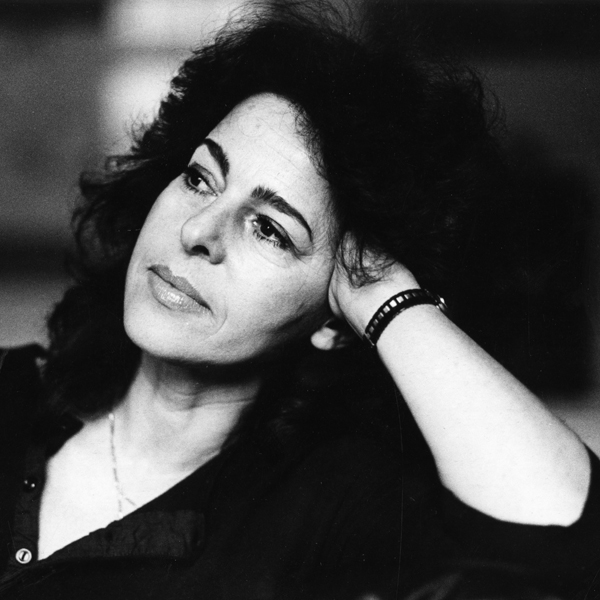
Sally Soames died this week, she was a portrait photographer who worked in Fleet Street until 2000. She started as a press photographer in 1963 with the Observer and then worked for the Sunday Times for 32 years. She also freelanced for the Observer, Guardian, New York Times and Newsweek.
There is a gallery of her work here
Her portraits of famous people, including well-known shots of Rudolf Nureyev, Chris Eubank, Iris Murdoch and Hilary Mantel, are now held in galleries and collections around the world.
There are also studies of Margaret Thatcher, Seamus Heaney and Tony Blair, the latter taken during the 2001 election campaign. Her arresting image of Andy Warhol was photographed through a pane of glass.
The National Portrait Gallery in London has 17 of her images. However she said that “I don’t like to call them portraits, they’re photographs of people”.
Soames worked exclusively in black and white, out of strong personal preference, refusing to work in colour, despite newspapers switching to colour photographs during her time as a press photographer
Getting a connection with her subject was the secret of her mesmerising portraits. Once she had only three and a half minutes to photograph Sean Connery. Two of those minutes she spent in conversation with him, the connection however brief was for her most important.
As she said, “I used to talk to them. Nowadays you don’t have the time with people – everything’s changed and PR people are timing you; it’s a nightmare.”
Her trademark mono images were nearly always shot in natural light. Her inspiration was Anthony Armstrong Jones who did the same, taking black-and-white pictures using available light.
Save for a few pictures she kept to pass on to her three grandchildren, she donated her archive to The Guardian Media Group’s Scott Trust Foundation.
Her top tip: “Don’t do it. You can’t get the same quality stuff as I did. It’s not going to happen again.”